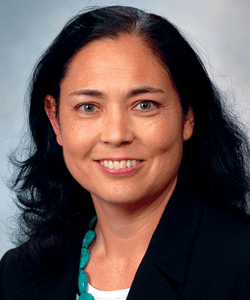More than 60 years ago, respiratory syncytial virus (RSV) was first recognized as a cause of bronchiolitis in infants. “RSV has long been thought of as a significant cause of lower respiratory tract infections in young children, but more recent studies indicate that the virus is a potentially serious problem in older adults,” says D. Jane Hata, PhD. Research indicates that RSV outbreaks occurred in long-term care facilities in the 1970s. Since that time, additional studies in hospitalized adults have suggested that RSV may be an important cause of illness among community-dwelling elderly people.
Recent estimates of the disease burden of RSV in adults have been based on mathematical models linking viral activity in children with hospitalization and death in adults. According to published research, RSV accounts for approximately 10,000 deaths each year in the United States among people aged 65 or older. Although these estimates are useful, their accuracy is questionable because of the circulation of other respiratory viruses that have clinical symptoms that are indistinguishable from RSV.
Taking a Closer Look
Previous studies have shown that morbidity and mortality rates for adult patients with RSV are high. In an effort to examine this phenomenon more thoroughly, Dr. Hata and colleagues had a study published in Diagnostic Microbiology & Infectious Disease in which they retrospectively reviewed 2-year chart data at multiple centers on 334 patients who tested positive for RSV. They then analyzed indicators of morbidity and mortality in children younger than 6 years old, in adults who were immunocompetent and immunosuppressed, and in transplant patients.
“Our results showed that several groups of adults with RSV experienced significant morbidity and mortality, including those with COPD, and patients who had received hematopoietic stem cell transplants or solid organ transplants,” says Dr. Hata. “For adult immunocompetent patients with RSV, the incidence of cardiovascular complications was about 20%.” The 60-day mortality rate was 12.8% for those with COPD.” The authors also observed 60-day mortality rates of 8.3% for hematopoietic stem cell transplant recipients and 13.3% for solid organ transplant recipients.
Among patients who tested positive for RSV, 60.0% received antibacterial or antifungal therapies following their diagnosis. Among all patients, a bacterial or fungal pathogen was not recovered from about three of every five cases. “Some groups of patients appear to be inappropriately treated with unnecessary antimicrobial therapies, highlighting the need for increased awareness on how best to manage these individuals,” Dr. Hata says.
More Work Needed
Findings of the study highlight the importance of recognizing that certain patient groups appear to be inadequately treated for RSV despite advances in treatment of the virus. “In light of our results, clinicians should keep a keen eye out for diagnosing RSV early,” says Dr. Hata. “RSV molecular tests could be useful in helping clinicians predict disease severity.” It is also critical for clinicians to recognize that pathogens, including RSV, can also contribute to the swell of patients in offices and hospitals during the winter months.



 PWeekly
PWeekly